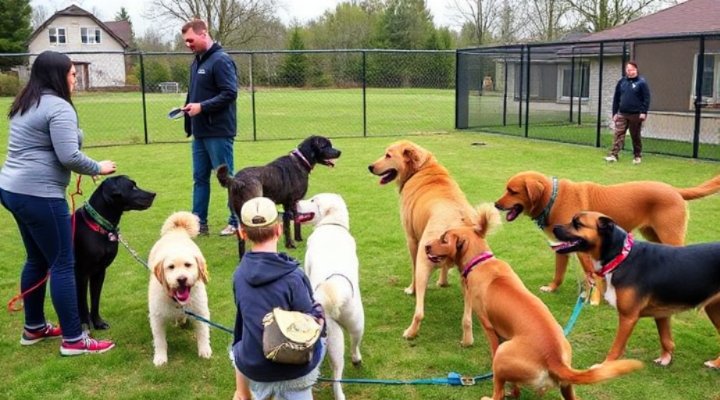Dog obedience training is the foundation for a happy relationship between you and your furry friend. It’s not just about teaching commands; it’s about building trust and understanding. In this guide, we’ll explore everything you need to know about dog obedience training, from basic commands to advanced techniques.

The Importance of Dog Obedience Training
First and foremost, dog obedience training creates a safe environment for both your pet and those around them. A well-trained dog is less likely to engage in dangerous behaviors like running into traffic or jumping on strangers. Moreover, training strengthens the bond between you and your pet, creating a relationship based on mutual respect.
For instance, when I first adopted my rescue dog, Max, he had no basic training whatsoever. Through consistent obedience training, we transformed from chaotic roommates to best friends who understand each other perfectly.

Basic Commands Every Dog Should Know
The cornerstone of dog obedience training begins with mastering these essential commands:
- Sit: The foundation for all other commands
- Stay: Crucial for safety in various situations
- Come: Potentially life-saving in emergency situations
- Down: Helps manage excitable behavior
- Leave it: Prevents dogs from picking up dangerous items
If you’re just starting out, consider joining our puppy training classes to get professional guidance.

Advanced Dog Obedience Training Techniques
Once your dog has mastered the basics, you might want to explore more advanced training. This could include:
- Off-leash obedience
- Distance commands
- Precision heeling
- Advanced recall techniques
For those interested in taking their training to the next level, our article on advanced dog obedience training offers valuable insights.
Common Challenges in Dog Obedience Training
Every dog is unique, and you might encounter specific challenges during training. Some common issues include:
- Distraction problems
- Stubborn behavior
- Fear-based resistance
- Over-excitement
For dogs with particular behavioral issues, our guide on aggressive dog training might be helpful.

Positive Reinforcement: The Key to Successful Training
Modern dog obedience training emphasizes positive reinforcement techniques. This means rewarding good behavior rather than punishing bad behavior. Some effective rewards include:
- Small, tasty treats
- Verbal praise
- Physical affection
- Playtime with favorite toys
Remember, consistency is crucial in dog obedience training. As highlighted in our daily training exercises checklist, short, regular sessions yield better results than occasional long sessions.

Creating a Training Schedule That Works
An effective dog obedience training schedule should consider:
- Your dog’s age and attention span
- Your daily routine
- Specific goals you want to achieve
- Time for reinforcement and practice
For puppies, our puppy training schedule provides an excellent framework to build upon.
Related Keywords
dog training, obedience classes, well-behaved dog, canine behavior, positive reinforcement training, basic commands, advanced dog training, puppy training, behavioral issues, training schedule
